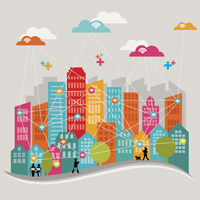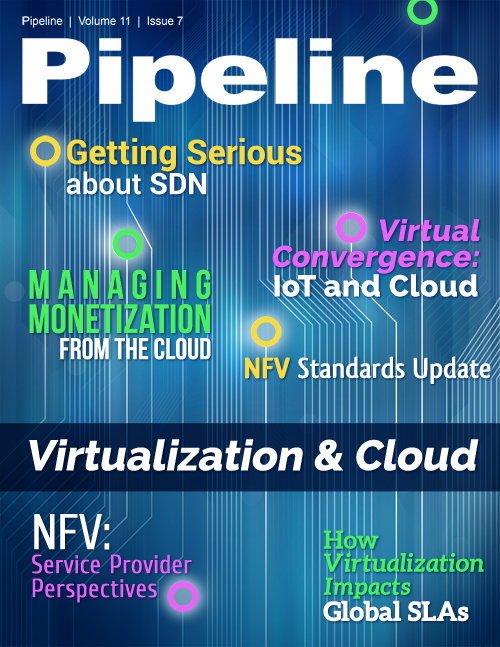Virtual Convergence: The Internet of Things and the Cloud
By: Jesse Cryderman

Think back to those dark ages known as the pre-cloud era. But don't rewind the clock too far, Amazon introduced the Elastic Compute Cloud just nine years ago. Cloud quickly became one of the hottest trends in information technology, and the landscape was initially quite messy as standards had to be ironed out, partnerships established, and interconnectivity advanced. Today many cloud providers have established interconnect agreements, standards are fairly fleshed out, security protocols have improved dramatically, and everything from complex OSS programs and infrastructure platforms to popular software like Adobe Photoshop to Microsoft Office are available in cloud variations.
The Internet of Things (IoT) is fast-becoming the new cloud, as vendors rush to capitalize on the promise of this rapidly advancing technology. Like cloud technology at its outset, IoT is typified by numerous IoT platforms and ecosystems, standards are in their infancy, and the landscape is still relatively fractured. At the same time, the cloud is an enabler for IoT, since continuous data collection from different platforms and devices is mandatory for tasks such as analyzing and forecasting, and this work is often performed in a cloud environment. (Interestingly, the IoT still runs largely on Amazon Web Services.)
Service providers, IT vendors, telco vendors, and niche players are all angling for their piece of the IoT pie. Following is an overview of the IoT landscape, how it intersects with cloud, and some actionable intelligence for service providers.
IoT market research
The reason for the IoT hype is pretty simple: analysts are forecasting massive growth. Here is a rundown of current IoT market predictions, courtesy of SAS Insights:
-
The total economic value-add from IoT across industries will reach $1.9 trillion worldwide in 2020, anticipates Gartner.
-
Fifty billion devices will be connected to the Internet by 2020, predicts Cisco.
-
The remote patient monitoring market doubled from 2007 to 2011 and is projected to double again by 2016.
-
The utility smart grid transformation is expected to almost double the customer information system market, from $2.5 billion in 2013 to $5.5 billion in 2020, based on a study from Navigant Research.
-
Wide deployment of IoT technologies in the auto industry could save $100 billion annually in accident reductions, according to McKinsey.
-
The industrial Internet could add $10-15 trillion to global GDP, essentially doubling the U.S. economy, says GE.
-
Seventy-five percent of global business leaders are exploring the economic opportunities of IoT, according to a report from The Economist.
-
The UK government recently approved 45 million pounds (US$76.26 million) in research funding for Internet of Things technologies.
-
Cities will spend $41 trillion in the next 20 years on infrastructure upgrades for IoT, according to Intel.
-
The number of developers involved in IoT activities will reach 1.7 million globally by the end of 2014, according to ABI Research estimates.
It’s clear from these predictions that there is an enormous amount of activity in the IoT space, and that opportunities exist in many verticals. What’s less clear is how (and even if) these predictions will come to pass. Who are some of the big players in the space? The following are few of the companies leading the IoT charge.
Cisco
Cisco’s IoT play is significant and far-reaching. The company can help customers converge unrelated networks, scale to meet increasing traffic demands, employ advanced data analytics, and create new class of intelligent applications-to increase productivity without sacrificing security. The company recently launched its Internet of Everything (IoE) Software and Services Suite, which expands on Cisco’s IoT offerings and drives IoE value. This suite analyzes the data culled from IoT deployments and connects them with the people and business processes. As a result, the process uncovers intelligence as well as application integration, process automation, and context-aware mobile collaboration capabilities to help organizations respond to information more quickly.



















